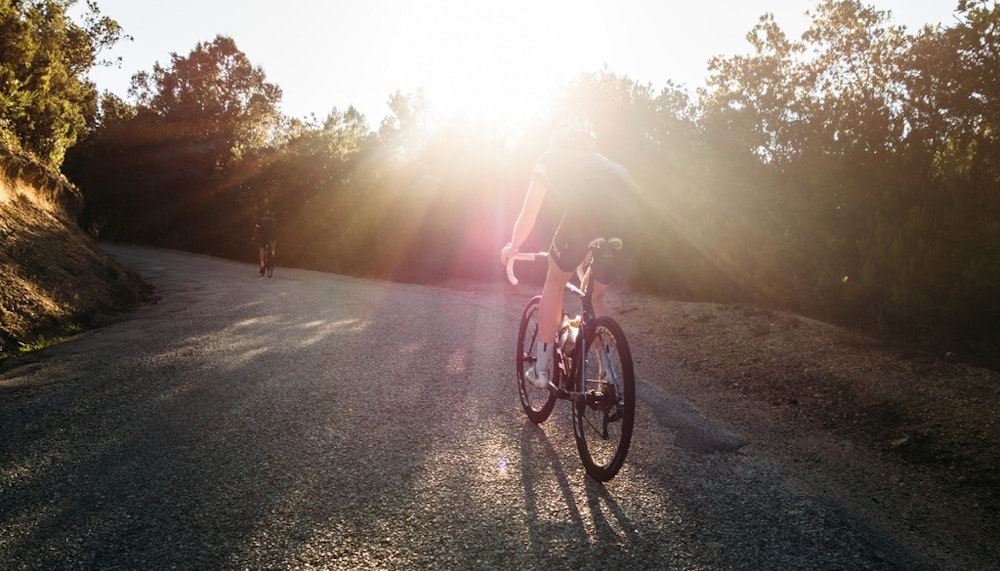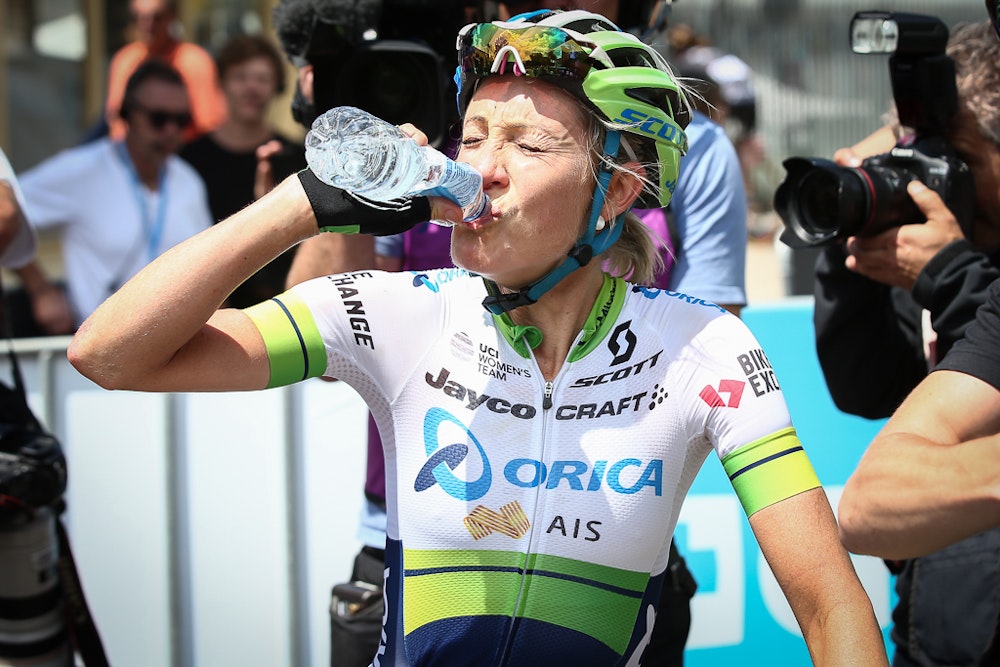Summer has officially arrived in the northern hemisphere. As have all the good things that come with it: sunny, warm rides and cold post-ride beers; crisp tanlines; bikepacking trips; BBQs and pool parties.
But it’s also the season of sunburns, heat exhaustion and dehydration.
I was reminded of this last week while spending a week in the Utah desert. The air was dry and hot. The sun was scorching and the terrain was completely exposed. In a place where temperatures easily rise past 100 degrees Fahrenheit, there is some extra planning needed before you go out and ride.
Here are some tips on beating the heat and keeping your cool.

PLAN YOUR RIDE:
Rise and ride early
Get out before the temperatures rise. The sun rises a little before 6 a.m. these days, so make sure you get out before the sun has a chance to warm up. Not a morning person? Alternatively, you can ride in the evening but the temperatures will still be higher than in the morning.
Head for the hills.
It may not be as accessible as leaving your house, but this is the time of year to head for the hills. The higher you go, the cooler it will be. Do be prepared for the temperatures to rise as you lose elevation and be prepared to have water and fuel left for the end of the ride.
Know how much water you’ll need and where your water sources are.
How many bottles can you carry and where will you be able to refill? Know before you go so you don’t risk running out of water. I have run out of water before and let me tell you, it’s uncomfortable and scary and it will send even the calmest of persons in a survival mode panic.
KEEP THE SUN OFF YOUR SKIN:
While you may be tempted to wear less, it’s actually more beneficial to wear more.
– A thin and wicking long sleeve jersey or sunblocking arm sleeves will keep the sun off your skin and ultimately, keep you cooler.
– Full gloves will also keep your hands from getting sweaty and slipping off the bars.
– Don’t leave the house without sunscreen either! Apply before and half-way through the ride. And pay attention to the back of your neck and ears especially.
COMBAT HOT FOOT:
When temperatures start to rise, feet can swell causing pressure inside the shoe and can lead to “hot foot”, a painful, and at times debilitating, experience as a result of the nerves and joints between the metatarsals get squeezed or pinched. To prevent your feet from getting too hot:
– Consider the color and ventilation of your shoes. Solid black shoes look great but can heat up fast.
– Choose thin socks that increase ventilation and wick sweat. Look for socks made of high-tech fibers such as Coolmax and Thermax.
When your feet do start swelling:
– Loosen your buckles or laces to make room for the swelling. Still not enough room? Try removing the sole.
– Poor water on your feet for temporary relief.

HYDRATE, HYDRATE, HYDRATE:
Proper hydration starts well before the ride. It’s important to start your ride well hydrated and to maintain proper hydration during the ride. This means you should be mindful of your hydration starting the evening before the ride. Unlike a low sugar bonk, which can be resolved within minutes of consuming food, countering the consequences of dehydration can take several hours and can be quite dangerous.
– Sports Medicine Australia recommends drinking at least 500mls (2-3 glasses) before the ride and up to one large bottle per hour when riding in the heat.
– Be aware, however, that water alone isn’t enough. To maximize water absorption, Dr. Stacy Sims recommends drinking a “functional hydration” with sodium and three to four grams of carbohydrates per 100ml. If you’ve properly hydrated before the ride, you can drink to thirst, but one should not exceed 800/ml per hour. If you’re not in the habit of drinking regularly, set a timer set as a reminder to drink if need be.
– Did you know: hydration needs are different for men and women. Women are at greater risk for exercise-induced hyponatremia (low blood sodium concentration) and thus consuming hydration with sodium is key. Learn more here.
– Freeze bottles the night before. Place your bottles in the freezer overnight to have cold, refreshing water longer.
– For extreme conditions, adventure and desert cyclist Kate Leeming recommends putting a thick wet sock over your bottle at the start of the ride. As you are cycling, the evaporative cooling keeps the heat down and that way you’re not drinking lukewarm water all day.
ENJOY THE SUMMER WEATHER (AFTER THE RIDE)
– Jump in a river or lake for full-body refreshment. But be warned that if you do this too early in the ride, you’re running the risk of an uncomfortable ride home and increased chaffing from the wet chamois.
– Enjoy that frosty post-ride beer or ice cream but be sure to pair it with water. Hydration should continue after you exercise. As a general rule, you need to slowly rehydrate over the course of 2-3 hours. Don’t gulp fluid. This is counterproductive for rehydration. Instead, consume a combination of an protein-based drink (the amino acids help with rehydration) and watery foods for optimal rehydration and recovery.
Got more warm weather riding tips? Share them in the comments below.
This article was originally published on cyclingtips.com




